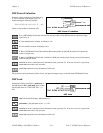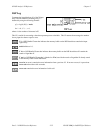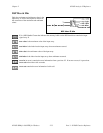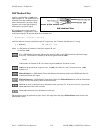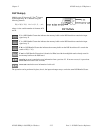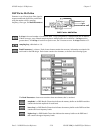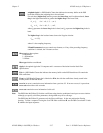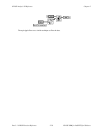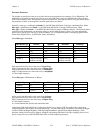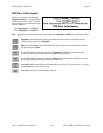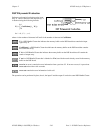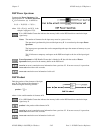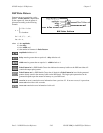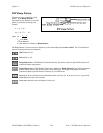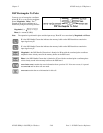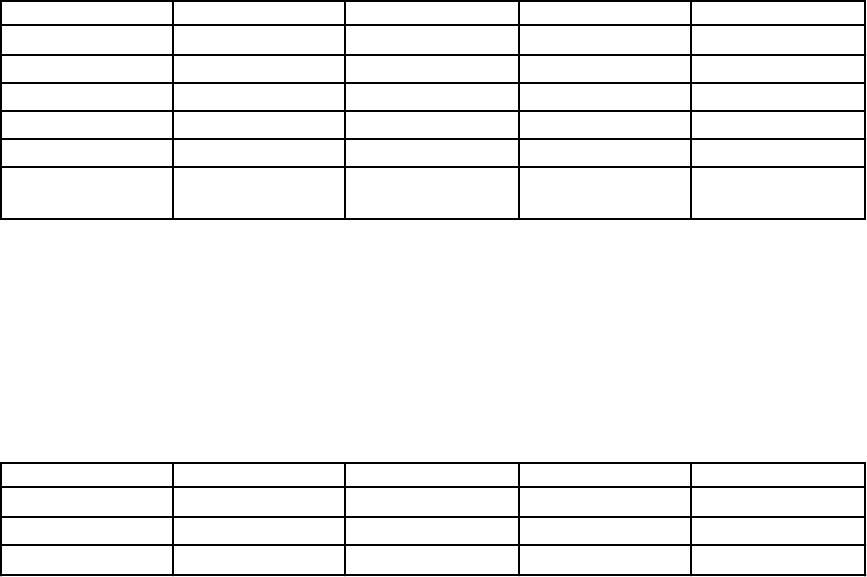
Chapter 2 NI-DSP Analysis VI Reference
NI-DSP SRM for LabVIEW for Windows 2-59 Part 3: NI-DSP Function Reference
Parameter Discussion
The weights are usually the same for every band and inversely proportional to frequency f for a differentiate. The
amplitudes of the bands are usually the same for every band and form a slope for a differentiation. The designed
filter is unconstrained, that is the frequency response in transitional period specifications is not guaranteed. Adjust
the parameters if there are discrepancies between specifications and results.
Generally, when type = multiband and bands ≥ 2, the DSP Parks-McClellan VI designs a multiband filter. When
filter type = differentiator and bands = 1, the DSP Parks-McClellan VI designs a differentiation. When
filter type = Hilbert and bands = 1, the DSP Parks-McClellan VI designs a Hilbert transform. The following tables
contain the brief requirements you must meet when you design different types of filters. For more information,
please refer to Digital Filter Design by Parks and Burrus, or "A Computer Program for Designing Optimum FIR
Linear Phase Digital Filters," by McClellan, Parks, and Rabiner.
When filter type = Multiband:
Filter Band Type LowPass HighPass BandPass BandStop
# of Bands (n) 2 2 ≥3 ≥3
# of taps odd/even odd odd/even odd
fl[0] 0.0 0.0 0.0 0.0
fh[n-1] 0.5fs 0.5fs 0.5fs 0.5fs
amp[0] >0.0 ≥0.0 ≥0.0 >0.0
amp[n-1] 0.0(for even taps)
≥0.0(for odd taps)
>0.0 0.0(for even taps)
≥0.0(for odd taps)
>0.0
fl[0] represents the first value in the array of Lower Freq.
fh[n-1] represents the last value in the array of Higher Freq.
amp[0] represents the first value in the array of Amplitude.
amp[n-1] represents the last value in the array of Amplitude.
fs is the sample frequency.
When filter type = Differentiator or Hilbert:
Filter Type Diff(odd) Diff(even) Hilbert(odd) Hilbert(even)
bands(n) ≥1 ≥1 ≥1 ≥1
fl[0] 0.0 0.0 0.0+∆ 0.0+∆
fh[n-1] 0.5fs-∆ 0.5fs 0.5fs-∆ 0.5fs
odd or even in the table refers to the value of the # of taps.
fl[0] represents the first value in the array of Lower Freq.
fh[n-1] represents the last value in the array of Higher Freq.
fs is the sample frequency.
∆ is a small number that specifies the transitional band.
Although the DSP Parks-McClellan VI is the most flexible way to design a FIR linear phase filter, it has more
complex parameters and requires some DSP knowledge. You may find it more convenient to use DSP Equi-Ripple
LowPass, DSP Equi-Ripple HighPass, DSP Equi-Ripple BandPass, and DSP Equi-Ripple BandStop. These
functions, which provide lowpass, highpass, bandpass and bandstop FIR filters with equal weighting factors in all
bands, are special cases of the DSP Parks-McClellan VI with simplified parameters.



